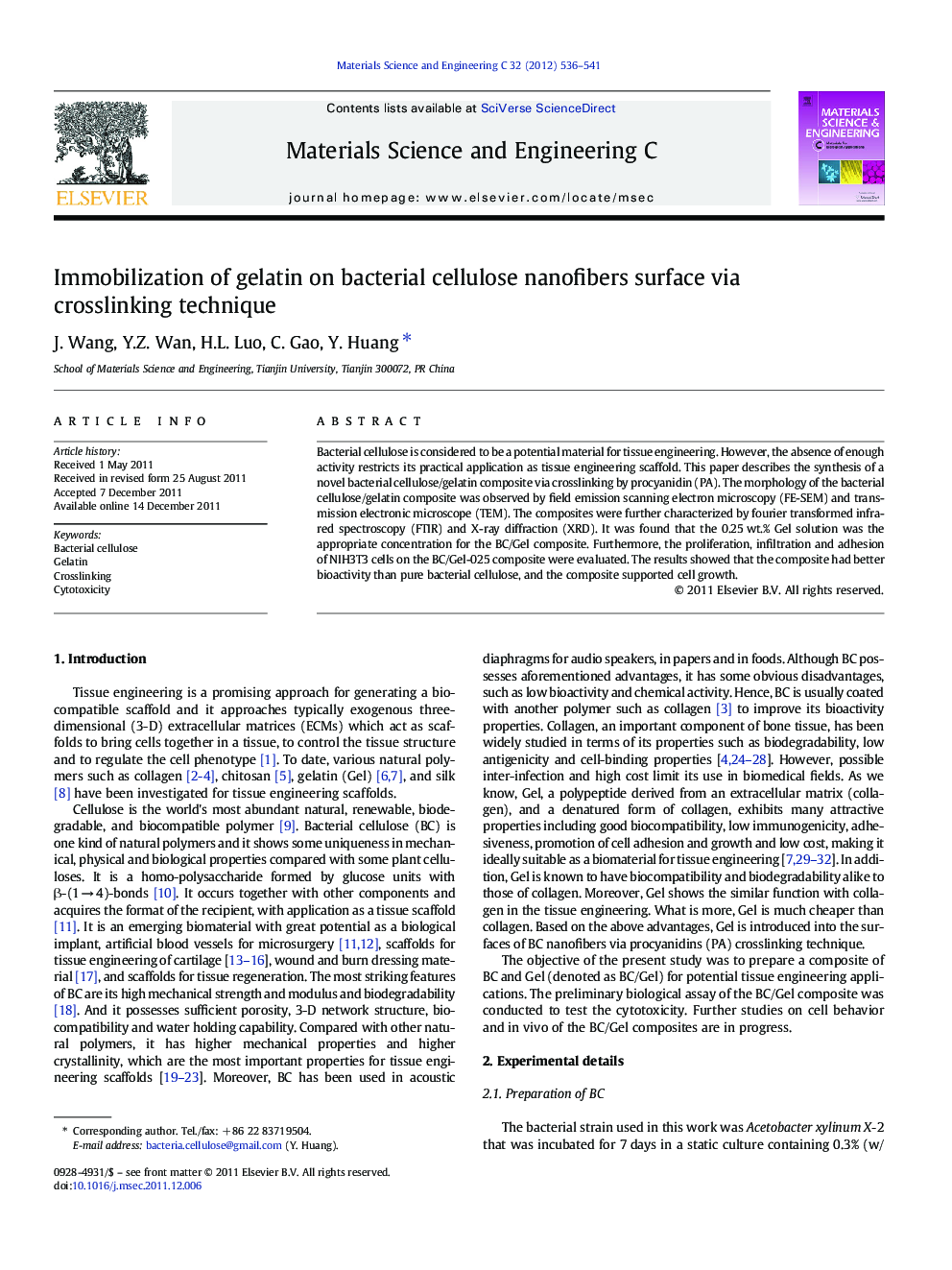| Article ID | Journal | Published Year | Pages | File Type |
|---|---|---|---|---|
| 1429134 | Materials Science and Engineering: C | 2012 | 6 Pages |
Bacterial cellulose is considered to be a potential material for tissue engineering. However, the absence of enough activity restricts its practical application as tissue engineering scaffold. This paper describes the synthesis of a novel bacterial cellulose/gelatin composite via crosslinking by procyanidin (PA). The morphology of the bacterial cellulose/gelatin composite was observed by field emission scanning electron microscopy (FE-SEM) and transmission electronic microscope (TEM). The composites were further characterized by fourier transformed infrared spectroscopy (FTIR) and X-ray diffraction (XRD). It was found that the 0.25 wt.% Gel solution was the appropriate concentration for the BC/Gel composite. Furthermore, the proliferation, infiltration and adhesion of NIH3T3 cells on the BC/Gel-025 composite were evaluated. The results showed that the composite had better bioactivity than pure bacterial cellulose, and the composite supported cell growth.
► Herein, procyanidin is an effective and bioactive reagent for gelatin materials. ► The 0.25% Gel solution is appropriate for the BC/Gel composite. ► It is proved that the BC/Gel composite is a new choice for the biomaterials.
